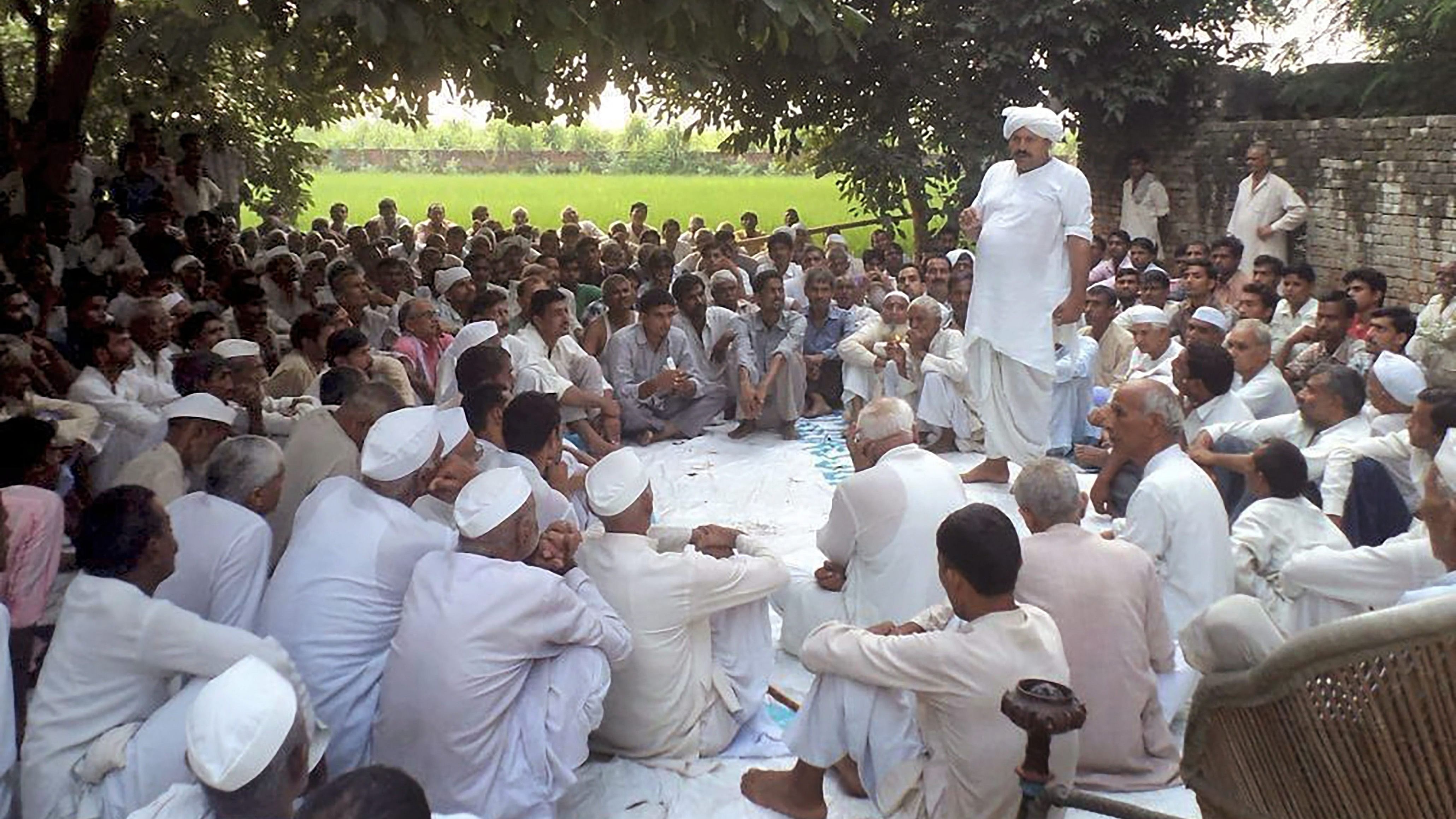
Khap panchayat.
PTI Photo
If one were to identify a classic trope in Indian politics, it would be the legitimization of a fringe institution by mainstream politics. Once this legitimization is successful, the fringe institution overpowers the mainstream, turns rogue, and causes irreparable damage to the State. Thereafter, the State employs military power to contain this devil and return it to the fringes. This has been the trajectory that explains the carnage in Punjab in the 1980s, the riots in Kandhamal in Orissa in 2008, and the havoc wreaked by the followers of Baba Ram Rahim Singh in several cities in North India in 2017. Currently, this trope is active in the legitimization of Khap Panchayats in the Hindi heartland.
Khap Panchayats have long been a menace in India. Numerous Supreme Court rulings have recorded the barbaric role played by them in honor killings in cases of inter-caste marriages. These judgements categorically note that the Indian legal system does not recognise the authority of institutions such as Khap Panchayats to dispense justice. The Supreme Court has recorded that a “polity governed by the ‘Rule of Law’ only accepts the decisions on rights and violations thereof by formal institutions set up for dealing with such situations”. Noting this, in 2018, the court declared the activities of Khap Panchayats regarding marriage diktats and their sanctity illegal.
The Supreme Court also passed guidelines directing local law enforcement agencies and the relevant state governments to undertake both preventive and corrective steps to ensure Khap Panchayats do not indulge in such activities.
In a different context, the Punjab & Haryana High Court had also declared that Khap Panchayats cannot sit as arbiters in criminal cases and settle them. For instance, a Khap Panchayat in Jhajjar had settled a murder case arising out of a long-term rivalry. In other instances in Rajasthan, several members of Khaps have been booked in different cases where they played accomplices in the domestic harassment of married women for not being chaste before their marriage.
Due to the judicial authorities taking cognizance of the Khaps’ high-handedness and general civil society and public awareness against their actions, their influence has started waning in the last decade. However, in the past two to three years, their authority has been legitimised yet again. Both mainstream political parties and trade unions have been kowtowing to Khap Panchayats and have brought them to the forefront. For instance, the farmers’ movement against the three farm law reforms proposed by the Union Government in 2020, the movement to prosecute Haryana Minister Sandeep Singh for sexual harassment and to remove him from his post, and the movement to prosecute Union Minister Brij Bhushan Sharan Singh for sexual harassment. These movements sought to increase their legitimacy with Khap Panchayats and encouraged their support and participation. Further, a number of government ministers, opposition leaders, and legislators have been visiting these Khaps to seek their support for their respective electoral battles.
Currently, with this legitimization, the Khaps are trying to get rid of their baggage of sanctioned honour killings, invasive diktats, etc. Once successfully accepted into the mainstream, these Khaps can turn into the menace that they have been known for. This is a possibility writ large due to the inherent nature of a Khap Panchayat. Khaps are largely caste-based institutions fostered to preserve regional culture and traditions. In a region, a sub-caste group forms a Gotra Khap, and these Gotra Khaps then nominate an individual for the Sarv Khap of that region. The Sarv Khap represents all the castes relevant in the region. However, because the institution of these Khaps is based on caste lines, most of the culture and traditions they preserve inherently foster the caste system. A legitimization of the Khaps runs the risk of further entrenching the existing power structures of caste.
Clearly, this legitimization is dangerous. It runs in the face of Article 38 of the Constitution, which requires the government to promote socio-economic and political justice. More pragmatically, it also runs the risk of becoming a security and stability threat. In the past few years, the Khaps have demonstrated their ability to successfully stall the functioning of the State and its citizens as part of their demonstrations. While the reasons for Khap protests in the recent past may seem ingenuous and indeed promote social justice against a powerful government, the political mainstream must remember the fire that they are playing with. Once legitimized, the immunity with which Khaps can operate to further entrench caste lines under the banner of ‘preservation of culture’ can be unmatched.
(The writer is an advocate)